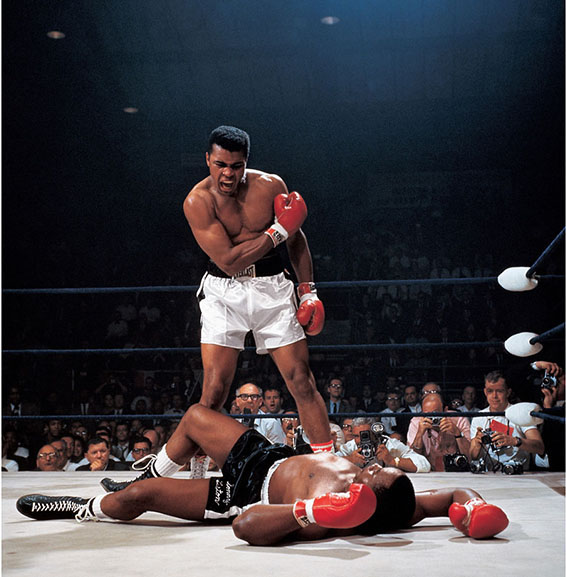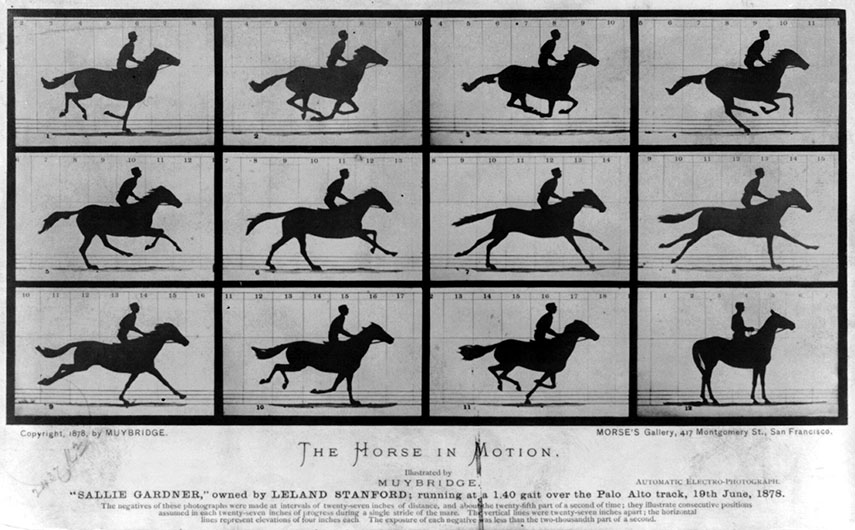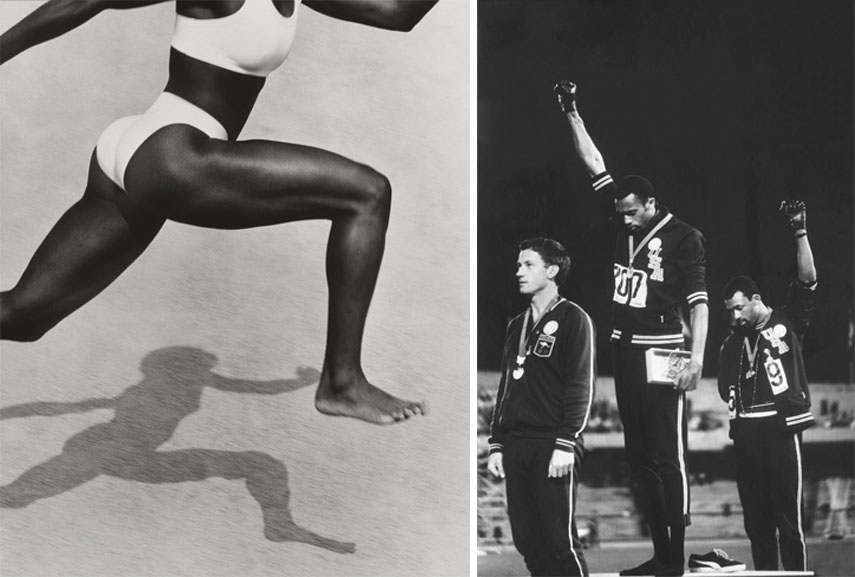Sports Photography - History and Purpose
It comes as no surprise that one of the most influential images of 2016 comes from the field of sports photography. In it, we see the fastest man in the world, Usain Bolt, giving us a smile while he once again storms ahead his opponents at the Olympic Games in Rio de Janeiro. The now iconic shot was taken by Getty Images photographer Cameron Spencer, and the picture itself became a permanent part of the popular culture in its own way. Over the course of the genre’s almost two hundred years old history, many renowned photographers helped build the impressive legacy of snapshots of professional athletes, amateurs and spectators, capturing the passion, the sacrifice and victory. Immersed in the world of action and adrenaline, “all” these artists had to do was train their eye, providing us with the greatest sports photography, but also portraiture, have to offer. Through their imagery, we become a part of the game, its spirit and excitement, we get to see and know the human body and its fascinating possibilities, we go behind the inspiration and the hard work of the most extraordinary individuals in front, but also behind, the photographic lens.

Shooting On Location - A Brief History of Sports Photography
When we talk about visual arts, perhaps there is no better example of the “moment-capturing” than sports photography. Its mastery in the beauty of sport is often shadowed by the intensity of the action, the portrayed individual(s), the shot itself - and it is precisely here that lies the genius of it all. Because photographers do such a spectacular job with bringing us in the game itself with their lens, we often neglect to acknowledge their ability to do so - we do not stop to dwell on what they did to obtain that photo. Yet, we most certainly should, as it takes a combination of technique, good eye, endurance, dexterity and speed in order to get the very best of the scenery in front of them.
Starting off through photojournalism and evolving into a proper art form, sports photography relied on the advancement of the photographic medium and its equipment to immortalize the tendencies that have been a part of human history since the Old Greece. As they portrayed athletes in their mesmerizing sculptures, the photographers did so in their sports pictures, most notably since the beginning of the 20th century. The interest in the athletic activities was on the rise among the members of both low and higher classes, resulting in shots of popular players in individual, group or team poses, be in on the field, inside an arena or the photographer’s studio. They appeared in newspapers and became collectible items even, becoming more and more elaborate as the quality of the camera and its lenses bettered. In the 1930s, the shutter speed increased and in 1954, the world saw the first issue of Sports Activities Illustrated, a magazine dedicated exclusively to sport and those who captured its wonders. Today, we can talk about entire exhibitions dedicated to the shooting of sports and the photos of the genre, as it certainly found the way to the galleries, art fairs, even esteemed museums and art institutions due to its incredible technique and an artistic quality that sometimes comes off unintentionally.

Point and Shoot! The Importance of the Equipment for Sports Photos
Much like in nature photography, those working in sports, or rather on the sidelines of it, tend to be exposed to a variety of spontaneous moments and have to work in an environment full of surprises and unexpected developments. Because they can’t get too close to the action, photographers have to use the long lenses, better known as telephoto lenses, with fast autofocus performance for clear, detail-filled shots. Because speed is crucial when it comes to catching a sports moment in an insanely intense situations, shutter speed becomes the most important setting of the camera. The goal is to capture an instant with minimal blur, which then means the use of high ISO speed as well. Although it is said that it is not the camera which makes the photograph but the one who uses it, designated equipment in sports photography is a must; otherwise, there will be no way to obtain the desired photo.
Best, fast camera lenses, which primarily depend on the sport thus the distance from the action, can isolate and focus on the most important frame within the sports game, for instance. These range from 14mm to 400mm and longer: an 85mm can cover a game of basketball, the 300-400mm one will do well during a soccer match, while an NFL game requires 600mm or longer, even! At a shutter speed of 1/1000, sports photographers can freeze a moment in time in the great outdoor, while the indoor situations and low light conditions require higher ISO values, for instance. Some use burst mode in order to capture the decisive moment à la Henri Cartier Bresson and others use remote lens cameras to get multiple points of view. Because the action is ofter rather far away, they almost never use flash - also because it can distract the players. This is why sports with bad indoor and outdoor lighting, such as ice hockey, volleyball or anything at night, represent the most challenging situations to photograph.
Another thing we might not think about when it comes to taking sports photography is the fact that the photographer himself must know the rules of the sport they want to cover. While a part of the technique requires simple reaction to the action, most of it comes down to anticipation and prediction; by learning the rules and the moves of the players, the artist can get an idea of where to point the camera next. This allows them to get the shot from a better position and it can save a lot of time and memory on the camera. Furthermore, it is also about telling the story, especially to those who weren’t there, or to those who were and wish never to forget. The sports photographers work before, during, and after the event, capturing its core as well as those around it, constantly being at the center of it all so they could bring the atmosphere to the hungry viewers.

The Art of Sports Photography
Yes, it is true - most of sports photography we’re used to consists of shooting on a field, within a court, inside a ring or an arena. Pictures taken by these often completely unknown artists during legendary sporting events left a deep mark on the history of our society over the last century and beyond, immortalizing emotion for the future to see. The thing we should not neglect, however, is the fact that many sportsmen and women are portrayed while they are not playing as well, before and after events and outside these venues, sometimes even inside a photographers’ studio. It is not just specialized individuals who are hired by newspapers of agencies who took pictures of famous athletes, but also artists who come from the fields of fashion photography, portraiture, fine art, photojournalism, even painting. Think of the very first examples of horses galloping taken by Eadweard Muybridge as early as the 1978; the captivating indoor and outdoor pictures made by photographer Richard Avedon, who photographed street basketball players and notable athletes such as dancer Mikhail Baryshnikov; Rineke Dijkstra and her trademark portraits of everyday people posing, including young swimmers and gymnasts; or Andy Warhol’s iconic 1977 series of polaroids of sport champions Muhammad Ali, OJ Simpson, Kareem Abdul-Jabbar and Jack Nicklaus, among others. After all, athletes and sports figures often turn into celebrities, a fact which subsequently makes them desirable within the field of advertising as well; their images are very often used for purposes of marketing of popular sports brands. What characterizes these pictures is the display of raw spectrum of emotion, the blood, sweat and tears, the dedication and passion, the stories that reflect on humanity and the world around it, sport as an important aspect of it all from the points of view of its protagonists and those who enjoy it to the fullest. This is why, without a doubt, sports photography has become a major player among all genres of the medium, proving to be both challenging and lucrative, at the same time establishing itself over the course of the years as a form of artistic expression which surely is a force to be reckoned with.
Editors’ Tip: The Photographer's Eye
One of today's most accomplished sports photographers, Marc Aspland, presents the highlights of a storied career documenting incredible moments in sports. The Chief Sports Photographer of the London Times, Marc Aspland has been capturing the beauty and drama of sports for a quarter of a century. This elegant and luxuriously designed book contains more than one hundred images from the photographer's personal archive. Some of the most prominent figures in world of sports are captured in penetrating and eye opening images. Whether he's documenting pivotal moments in Champions League football, matches at Wimbledon, the Tour de France, the Rugby World Cup, or the Olympics, Aspland, in the words of Oliver Holt, "transcends the action to take in the indomitability of the human spirit; the quest for perfection and fulfillment; and reflects the breathtaking beauty of the world around us."
Featured images in slider: Usain Bolt of Jamaica competes in the Men's 100 meter semifinal on Day 9 of the Rio 2016 Olympic Games in Rio de Janeiro on Aug.14, 2016. Image by Cameron Spencer via TIME; Avi Torres of Spain sets off at the start of the 200m freestyle heats in the Paralympic Games, Athens, 2004 by Bob Martin. Courtesy of Bob Martin/Sports Illustrated; Andy Warhol's polaroids of Sport Champions, 1977. Copyright Andy Warhol Foundation; Men’s Beach Volleyball match between Brazil and Canada, London Olympics, The Horse Guards Parade ground, London, 2012 by Donald Miralle. Leucadia Photoworks Gallery, courtesy of the artist; Spectators at the Berlin Olympics, Germany, in 1936 by Erich Andres. Photograph: The International Olympic Committee; Boxing Study 1805 Sergio Martinez, 2010 by Howard Schatz. Courtesy of the Staley-Wise Gallery, New York; John G. Zimmerman, Bednarik Knocks Out Gifford, 1960, via the artist's website; Alzheimer’s Ping Pong Therapy, Los Angeles, CA, 2011 by Lucy Nicholson. Courtesy of Lucy Nicholson/Reuters; Victor Trumper, 1905 by George Beldam, via portrait.gov. All images used for illustrative purposes only.
Can We Help?
Have a question or a technical issue? Want to learn more about our services to art dealers? Let us know and you'll hear from us within the next 24 hours.

